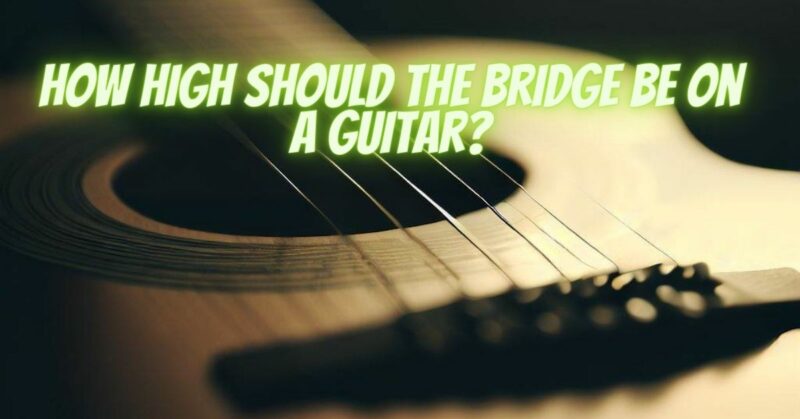The bridge of a guitar plays a critical role in determining the instrument’s playability, intonation, and tone. One of the key aspects of setting up a guitar is determining how high the bridge should be. Achieving the perfect bridge height is essential for ensuring comfortable playability and optimal sound. In this article, we will explore the factors that influence the height of the guitar bridge and provide guidelines for finding the right balance.
The Importance of Bridge Height
The bridge of a guitar is a crucial component that serves several essential functions:
- String Anchoring: The bridge holds the guitar strings securely in place at the body end, ensuring proper tension and vibration.
- Intonation Adjustment: The height of the bridge saddle, a component of the bridge, can be adjusted to fine-tune the intonation of the guitar. Proper intonation ensures that the instrument plays in tune across all frets.
- String Action: The distance between the strings and the fretboard, known as string action, is determined by the height of the bridge saddle. Proper action setup is essential for comfortable playability and preventing string buzz.
- Tone and Sustain: The bridge, along with the saddle material, significantly influences the guitar’s tone and sustain by transmitting string vibrations to the soundboard.
Factors Influencing Bridge Height
Several factors influence the height of the bridge on a guitar:
- Neck Relief: The curvature of the guitar neck, known as neck relief, plays a significant role in determining the bridge height. A well-adjusted neck should have a slight forward bow, which affects the action and string height.
- String Gauge: The thickness of the strings, or string gauge, affects the amount of tension they exert on the bridge. Heavier gauges may require slightly higher action to prevent string buzz, while lighter gauges may allow for lower action.
- Playing Style: Your playing style and technique can influence your preference for bridge height. Players who engage in aggressive strumming or fingerpicking may prefer slightly higher action to prevent buzzing, while others may favor lower action for ease of play.
- Personal Preference: Ultimately, the height of the bridge saddle is a matter of personal preference. Some players prefer higher action for the added resonance and tone, while others prioritize lower action for faster playability.
Determining the Right Bridge Height
Finding the ideal bridge height for your guitar involves experimentation and adjustment. Here are some general steps to help you determine the right balance:
- Assess Neck Relief: Begin by checking the neck relief. If the neck has too much forward bow or back bow, it may require adjustment via the truss rod to achieve a slight forward bow.
- Measure String Height: Use a ruler or feeler gauges to measure the action at the 12th fret. Adjust the bridge saddle height as needed, raising or lowering it evenly to maintain proper string height across all strings.
- Playability Test: Play the guitar and assess how it feels. Ensure that there is no excessive string buzz, and the action is comfortable for your playing style.
- Intonation Check: Use a guitar tuner and play notes on various frets to verify that the guitar is in tune across the entire fretboard. Adjust the saddle height slightly if necessary to achieve accurate intonation.
The ideal bridge height on a guitar is a balance between comfort, playability, and sound. It depends on factors like neck relief, string gauge, playing style, and personal preference. Experimentation and adjustment are essential in finding the right bridge height for your specific needs and musical style. If you’re uncertain about making these adjustments, it’s advisable to seek the assistance of a professional guitar technician or luthier who can set up your guitar to your specifications, ensuring that you achieve the perfect balance for your playing experience.

